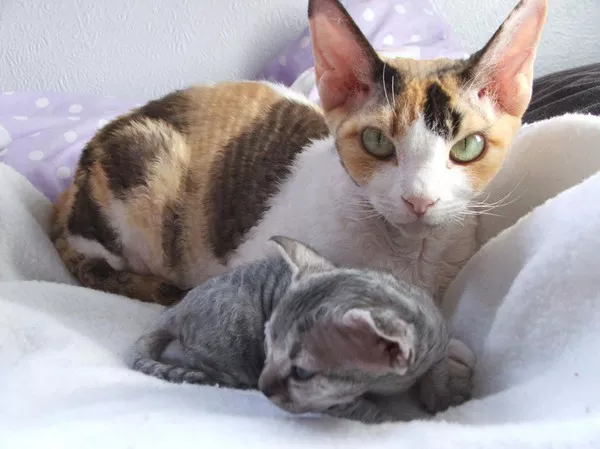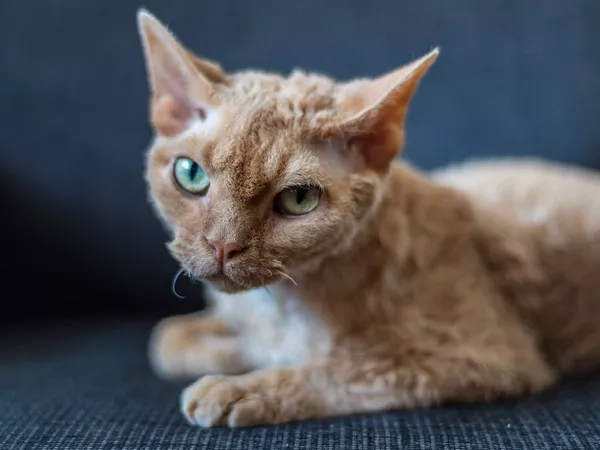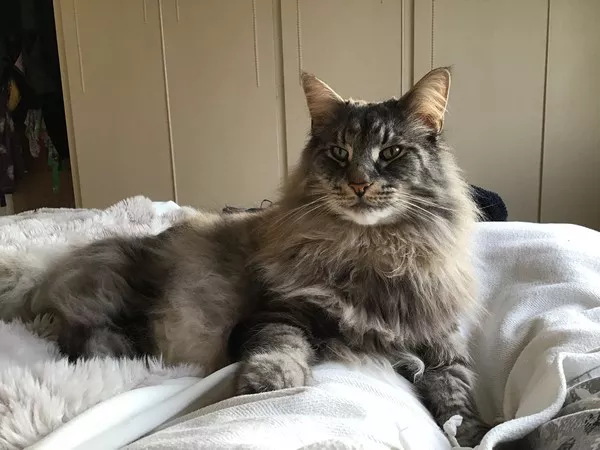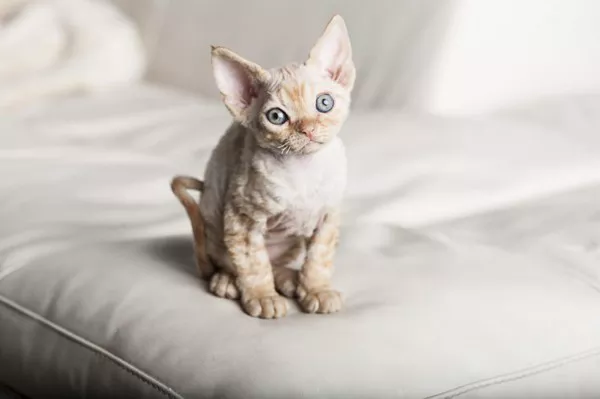The Devon Rex, a breed known for its wavy coat and large, low-set ears, stands out in the feline world for its unique appearance and playful demeanor. Among the various traits that captivate enthusiasts and pet owners alike is the question of their eye alignment: Are Devon Rex cats cross-eyed, or is this merely a perception influenced by their distinctive facial structure? This article delves into the visual aspects of the Devon Rex, focusing on the occurrence of strabismus (cross-eyed condition), its causes, implications, and management strategies.
Devon Rex Breed
Originating in England during the late 1950s, the Devon Rex is a result of a natural mutation that produced its first recognized member, a curly-coated kitten named Kirlee. The breed’s appearance is marked not only by its short, soft, and wavy coat but also by its wide-set, large eyes, which contribute to the curiosity about their ocular health. The breed’s playful, friendly nature combined with their distinctive “elfin” features makes them a favorite among cat lovers.
Understanding Strabismus in Cats
Strabismus is a condition in which the eyes do not properly align with each other when looking at an object. This misalignment can result in either one or both eyes turning inward, outward, upward, or downward, and is categorized as either congenital (present at birth) or acquired. Understanding this condition involves exploring both genetic and environmental factors that might influence its development.
Genetic Predispositions to Strabismus
In some cat breeds, such as the Siamese or Himalayan, genetic factors contribute to the prevalence of congenital strabismus. These breeds often exhibit a convergent strabismus, where the eyes turn inward. The question arises: Is such a predisposition present in Devon Rex cats?
Research into feline genetics suggests that while certain breeds have a higher incidence of strabismus due to their genetic makeup, the Devon Rex has not been conclusively shown to have a breed-specific predisposition to this condition. However, individual cases may still occur, potentially influenced by lineage-specific genetic traits not yet fully understood or documented.
Investigating Incidence Rates Among Devon Rex Cats
Analyzing veterinary records and breed health surveys can help identify any patterns of strabismus among Devon Rex cats. While comprehensive data specifically tracking strabismus in Devon Rex cats is limited, anecdotal evidence from breeders and veterinarians suggests that significant occurrences of strabismus are relatively rare in this breed compared to those genetically predisposed like the Siamese.
The Role of Facial Structure
The distinctive facial structure of the Devon Rex, characterized by wide-set eyes and a short muzzle, may contribute to perceptions of ocular misalignment. This structural trait can create an illusion of strabismus, particularly in photographs or from certain angles, even when the eyes are properly aligned. Therefore, understanding the breed’s facial anatomy is crucial for distinguishing actual strabismus from mere appearance.
Health Implications of Strabismus
For cats affected by strabismus, the primary concern often relates to visual perception. Strabismus can affect a cat’s ability to gauge depth and distance, potentially impacting its coordination and spatial navigation. However, many cats adapt well to their condition and can lead normal, active lives without significant disability.
Diagnosis and Management of Strabismus in Cats
Diagnosing strabismus involves a thorough ocular examination by a veterinarian, possibly supplemented by consultations with a veterinary ophthalmologist. Treatment may vary depending on the cause and severity of the misalignment. In many cases, no treatment is necessary, particularly if the cat does not seem bothered by the condition. In more severe cases, surgical intervention might be considered.
Preventive Measures and Breeding Considerations
For breeders, understanding the genetic components of health conditions like strabismus is vital. Responsible breeding practices, including genetic screening and selection, can help minimize the prevalence of such conditions. Potential Devon Rex owners should inquire about the ocular health of the kitten’s parents and any known issues observed in previous litters.
Conclusion: The Devon Rex and Strabismus
In conclusion, while the Devon Rex breed does not have a high incidence of strabismus, individual cases may still occur. The breed’s distinctive facial structure can also lead to misconceptions about their ocular alignment. Owners and breeders should remain informed about the signs of strabismus and seek veterinary advice if concerns arise. As research into feline genetics advances, a clearer picture of the health predispositions of breeds like the Devon Rex will likely emerge, aiding in the proactive management of breed-specific health issues.

























